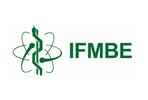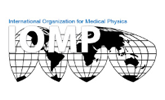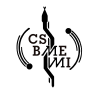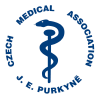|
1
|
Diagnostic Imaging
- 1.1. Computed tomography
- 1.2. Cone–beam CT
- 1.3. Radiography
- 1.4. Breast imaging
- 1.5. Interventional procedures
- 1.6. New imaging techniques (X-ray phase contrast, spectral imaging, monochromatic imaging…)
- 1.7. Magnetic resonance imaging and spectroscopy
- 1.8. Optical imaging
- 1.9. Ultrasound imaging and optical coherence tomography
- 1.10. Optical imaging and microscopy
- 1.11. Molecular imaging (SPECT, PET, optical)
- 1.12. Multimodality imaging
- 1.13. Quality assurance/control (QA/QC)
- 1.14. Detector technology
- 1.15. Image quality measures
- 1.16. Optimization
- 1.17. Contrast agents
- 1.18. Preclinical imaging
- 1.19. Imaging bio–impedance and bioelectric sources
- 1.20. Biomarker imaging
- 1.21. Other
|
|
2
|
Image Processing
- 2.01. Image reconstruction
- 2.02. Multi–modality data handling (hybrid systems, off–line fusion)
- 2.03. Quantitative image analysis
- 2.04. Statistical image analysis (parametric and non-parametric tests and mapping)
- 2.05. Computer–aided diagnosis (CAD)
- 2.06. Digital phantoms and Monte Carlo methods
- 2.07. Machine learning (neural networks, deep learning, ...)
- 2.08. Image processing, display and visualization
- 2.09. Image processing, segmentation and registration
- 2.10. Functional neuroimaging and neuronavigation
- 2.11. Radiomics
- 2.12. Other
|
|
3
|
Information Technology in Healthcare
- 3.01. Data standards
- 3.02. Data and information models and representations, standards, interoperability
- 3.03. Systems for quality assurance and dose tracking
- 3.04. Artificial intelligence
- 3.05. Teleradiology
- 3.06. Big data challenges and applications in healthcare
- 3.07. Decision support systems, and tools in healthcare
- 3.08. Electronic patient/medical/health records
- 3.09. Information quality, privacy, security, and ethics
- 3.10. Integrated healthcare workflow, systems, applications
- 3.11. Personal health systems, patient–centered healthcare services and applications
- 3.12. Usability and user experience issues with health IT
- 3.13. Health IT ecosystems
- 3.14. Other
|
|
4
|
Modelling and Simulation
- 4.01. Biological effects of ionizing radiation
- 4.02. Biological effects of non–ionizing radiation
- 4.03. Modelling in treatment planning
- 4.04. Modelling for diagnostic imaging
- 4.05. Detector modelling
- 4.06. Modelling for radiation protection applications
- 4.07. Physiological modelling
- 4.08. Computational biology in BME
- 4.09. Mimicking phantoms
- 4.10. Bioinformatics
- 4.11. Biological modelling
- 4.12. Hemodynamics
- 4.13. Neurodynamics
- 4.14. Transport and physiological modelling
- 4.15. Ultrasound simulation
- 4.16. Network and systems biology
- 4.17. Other
|
|
5
|
BME and MP Education, Training and Professional Development
- 5.01. Education and training in MP and BME
- 5.02. Continuous professional development in MP and BME
- 5.03. Accreditation and certification
- 5.04. Regional/national experiences of E&T
- 5.05. Teaching healthcare professionals
- 5.06. Technology enhanced education
- 5.07. Career development in MP and BME
|
|
6
|
Patient Safety
- 6.01. Reporting systems
- 6.02. Accidents, incidents, and risk management
- 6.03. Skin injuries
- 6.04. Nuclear and radiological emergencies
- 6.05. Emergency preparedness
- 6.06. Remote dose monitoring and risk and dose optimization
- 6.07. Diagnostic reference levels
- 6.08. Caregivers
- 6.09. Safety of non–ionizing radiation
- 6.10. Human factors engineering for medical device and system design
- 6.11. Patient safety, medical errors, and adverse event prevention related to health technologies
- 6.12 Protocol optimization
|
|
7
|
Accreditation and Certification
- 7.01. Hospital / Clinical accreditaion
- 7.02. Quality systems/quality assurance
- 7.03. Clinical audits
- 7.04. Future perspectives (new areas requiring standardization (accreditation/certification)
- 7.05. Role of regulatory bodies
- 7.06. Standards
- 7.07. International healthcare accreditation
- 7.08. National accreditation schemes
|
|
8
|
Health Technology Assessment
- 8.01. Technology Management Programs
- 8.02. Equipment Management Systems
- 8.03. Health Technology Assessment and Economics
- 8.04. Productivity and Benchmarking
- 8.05. Cost Effective Technologies for Developing Countries
- 8.06. Clinical trials
|
|
9
|
Biosignals Processing
- 9.01. Linear Dynamic Analysis of Biomedical Signals
- 9.02. Nonlinear Dynamic Analysis of Biomedical Signals
- 9.03. Time-frequency Analysis
- 9.04. Connectivity and Causality
- 9.05. Signal Pattern Classification
- 9.06. EEG, MEG, ECG, CTG, EMG, MEG, ERG Signal Processing
|
|
10
|
Biomechanics, Rehabilitation and Prosthetics
- 10.01. Orthopaedic Biomechanics
- 10.02. Cardiovascular Biomechanics
- 10.03. Dental Biomechanics
- 10.04. Accidental Biomechanics
- 10.05. Rehabilitation Engineering and Robotics
- 10.06. Human Movement Biomechanics
- 10.07. Biofluids
- 10.08. Tissue Biomechanics
- 10.09. Cellular and Molecular Mechanics
|
|
11
|
Minimum Invasive Surgery, Robotics, Image Guided Therapies, Endoscopy
- 11.01. Minimal Invasive Surgery and Instruments
- 11.02. Image-Guided Devices and Systems
- 11.03. Endoscopy and Endoscopic Interventions
- 11.04. Virtual Reality in Medicine
- 11.05. Robots and Manipulators in Therapy
|
|
12
|
Diagnostic and Therapeutic Instrumentation
- 12.01. Anaesthesia Systems
- 12.02. Injection and Infusion Systems
- 12.03. Bioimpedance
- 12.04. Cardiovascular Systems
- 12.05. Neuromodulation Systems
- 12.06. Dialysis and Apheresis Systems
- 12.07. Pulmonary Systems
- 12.08. Sleep Systems
- 12.09. Therapeutic Systems
|
|
13
|
Micro- and Nanosystems, Active Implants, Biosensors
- 13.01. Biosensors
- 13.02. Nanotheranostics
- 13.03. Body Sensor Networks
- 13.04. Active Implants
- 13.05. Lab-on-chip/Biochips
|
|
14
|
Neuroengineering, Neural Systems
- 14.01. Brain Physiology and Modelling
- 14.02. Blood Brain Barrier & Pharmacokinetics
- 14.03. Motor Learning and Neural Control
- 14.04. Brain Computer/Machine Interfaces
- 14.05. NeuroProstheses
- 14.06. Transcranial Magnetic and Electric Stimulation
- 14.07. Deep Brain Stimulation
- 14.08. Epilepsy Monitoring
- 14.09. Neurological Disorders
|
|
15
|
Biomaterials, Cellular and Tissue Engineering, Artificial Organs
- 15.01. Nanotechnology in Regenerative Medicine and Tissue Engineering
- 15.02. Artificial Skin, Bones, Joints, Teeth and Related Biomaterials
- 15.03. Cardiovascular Biomaterials, Artificial Heart
- 15.04. Cardiac Neuromodulation Assist Devices
- 15.05. Brain Neuromodulation Assist Devices
- 15.06. Drug Delivery Systems
- 15.07. Current Advances in Stem Cell Biology
- 15.08. Neurocultures
|
|
16
|
Assistive Technologies
- 16.01.Telemedicine, Distant monitoring, Tele-homecare, and Domotics
- 16.02. Internet of Everything
- 16.03. Cybersecurity
|
|
17
|
Biological Effects of Electromagnetic Fields
- 17.01. Biological Effects of Non-Ionizing Radiation
- 17.02. Modelling
- 17.03. Measurement and Assessment
- 17.04. Therapeutic Applications
|
|
18
|
Clinical Engineering
- 18.01. Health Technology Management
- 18.02. Quality, Productivity and Benchmarking
- 18.03. Telemedicine in Developing Countries
- 18.04. Information and Communication Technologies and Clinical Engineering (CE-IT)
- 18.05. International Standards and Regulations of medical devices
- 18.06. Innovation and Design of Surgical and Medical Devices
- 18.07. Disaster Preparedness for Clinical Engineers
- 18.08. Clinical Process Analysis and Optimization
- 18.09. Medical Devices Incident Analysis and Management
- 18.10. Forensic Clinical Engineering and Risk Management
- 18.11. Clinical Engineering Certification, Training and Education
- 18.12. Decision Support Systems and Clinical Engineering
- 18.13. National Societies and International Cooperation
- 18.14. Clinical Engineering Success Stories
|
|
19
|
Radiation Oncology Physics and Systems
- 19.01. Brachytherapy
- 19.02. VMAT: Planning and Delivery/IGRT
- 19.03. VMAT: Verification and QA
- 19.04. IMRT: Planning and Delivery/IGRT
- 19.05. IMRT: Verification and QA
- 19.06. MRI/Linac
- 19.07. Motion compensation: Imaging and Delivery
- 19.08. Stereotactic Radiosurgery
- 19.09. Treatment planning
- 19.10. Dose calculations
- 19.11. Dose delivery verification
|
|
20
|
Dosimetry and Radiation Protection
- 20.01. Dosimetry in therapy (experiments, calculations)
- 20.02. Dosimetry in imaging (experiments, calculations)
- 20.03. Dosimetric techniques and phantoms
- 20.04. Mathematical modelling of radiation protection
- 20.05. Shielding design
- 20.06. Micro– and nanodosimetry
- 20.07. Dosimetry and calibration
- 20.08. Radiation protection optimization
- 20.09. Risk and dose optimization
- 20.10. Occupational dosimetry
- 20.11. Nuclear and radiological emergencies
- 20.12. Other
|
|
21
|
Advanced Technologies in Cancer Research and Treatment
- 21.01. Adaptive radiation therapy (ART)
- 21.02. Image–guided radiation therapy (IGRT)
- 21.03. Real time IGRT
- 21.04. High intensity focused ultrasound (HIFU) therapy
- 21.05. Target ablation by using microwave, radiofrequency, cryotherapy, etc.
- 21.06. Nanotechnology in radiation therapy and imaging
- 21.07. Small animal research technologies
- 21.08. Hyperthermia therapy
- 21.09. Laser therapy
- 21.10. New particle accelerators for radiation therapy
- 21.11. Light ion radiotherapy
- 21.12. Robotics and mechatronics in cancer diagnostics and therapeutics
- 21.13. Other
|
|
22
|
Biological Effects of Ionizing Radiation
- 22.01. DNA damage and repair in cells and tissues
- 22.02. Off target radiation effects – cytoplasmic damage, bystander effect, genomic instability
- 22.03. Tumour heterogeneity and response to radiation
- 22.04. Cell radiosensitivity/radioresistance and its targeted manipulations
- 22.05. Dose hypofractionation and hyperfractionation
- 22.06. Protons and high-LET radiations: implications for cancer treatment
- 22.07. Low dose effects
- 22.08. Radiomics and systems radiobiology
- 22.09. Biodosimetry
- 22.10. Clinical radiobiology
- 22.11. Other
|
|
23
|
Nuclear Medicine and Molecular Imaging
- 23.01. Nuclear medicine instrumentation – present and future designs
- 23.02. Computed tomography in nuclear medicine
- 23.03. Magnetic resonance in nuclear medicine
- 23.04. SPECT, SPECT/CT imaging
- 23.05. PET/CT imaging
- 23.06. PET/MR imaging
- 23.07. Image reconstruction and correction strategies
- 23.08. Image registration and segmentation
- 23.09. Image quantification
- 23.10. Tracer kinetic modelling
- 23.11. Nuclear medicine dosimetry
- 23.12. Monte Carlo modelling in nuclear medicine
- 23.13.Dosimetry in nuclear medicine (experiments, calculations)
|






